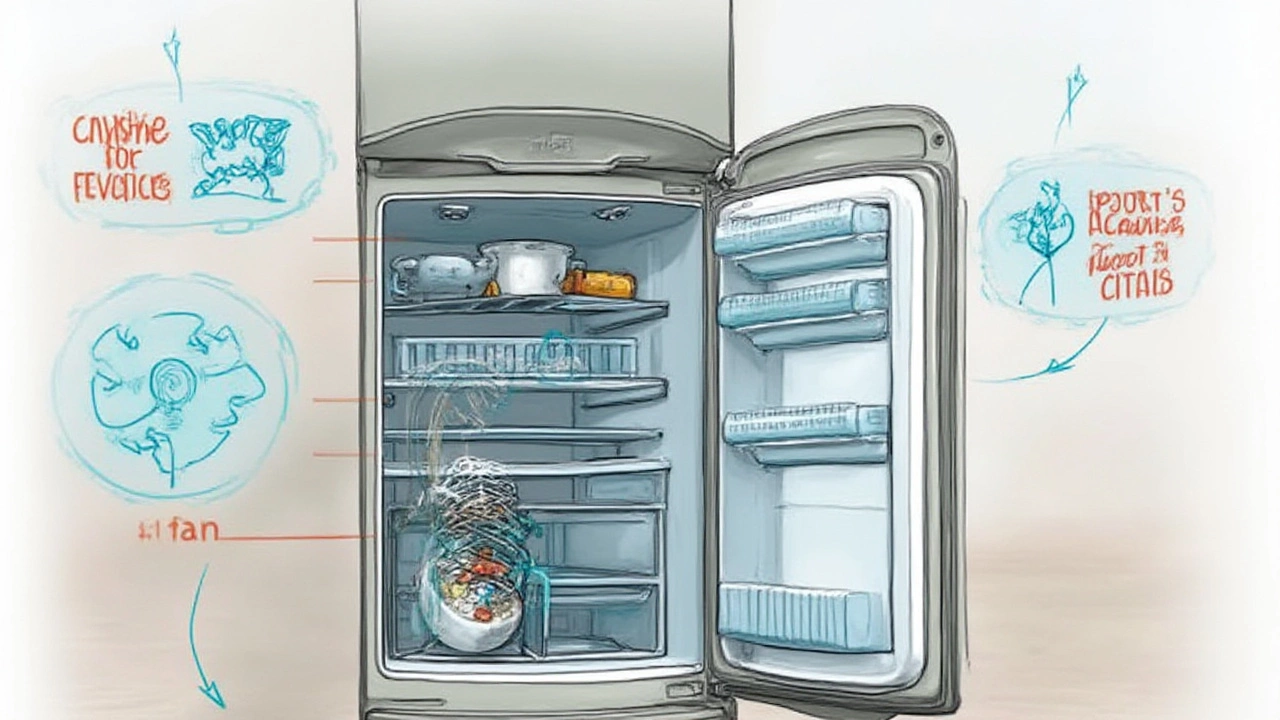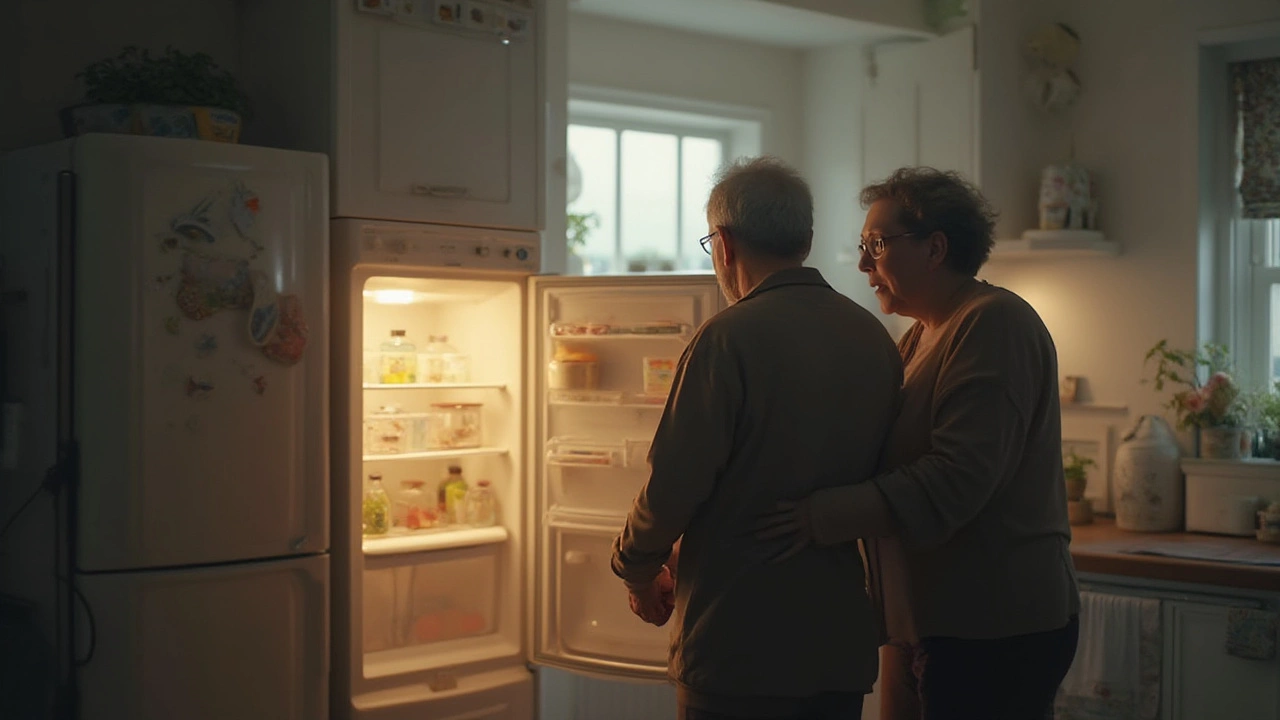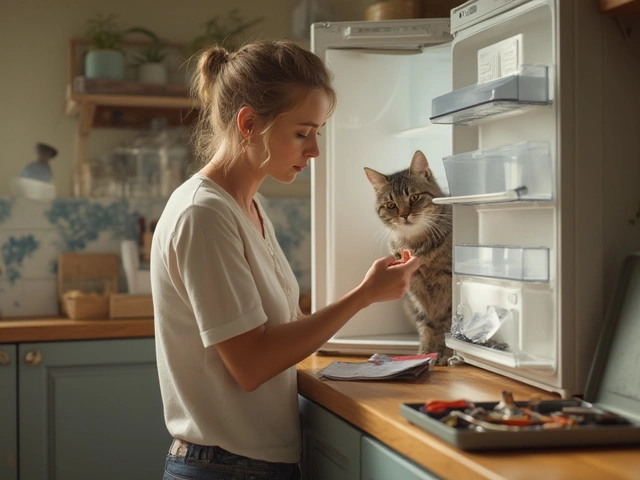Ever open your fridge on a sticky summer night, grab the milk, and realize it’s warmer than your kitchen? Yet—bright as ever—the fridge light stares back like nothing’s wrong. Welcome to one of the most common, annoying kitchen mysteries: the fridge that glows but won’t chill. There’s nothing quite like fumbling for snacks, only to find food in danger and a strange calm from your appliance. But don’t write off your groceries just yet. Today, we're pulling back the curtain to uncover what’s really going on inside.
Why Your Fridge Isn’t Cooling: Common Causes Hiding in Plain Sight
A fridge that gives you light but not cold makes you want to shake it and ask, "Why?" Let’s clear up what’s happening. When your fridge light is on, it means you have power, so you can cross off blown fuses or unplugged cords. The problem is deeper, often where you can’t see without a screwdriver. But here’s the kicker: most cooling failures start simple, then grow into wallet-busting headaches if you ignore them.
Start with the basics. Any chance the fridge is crammed against the wall, choking its airflow? These appliances need vent space. Jammed too close, and the compressor cooks faster than your dinner leftovers. Next up: temperature settings. Accidentally nudged that slider while reaching for ketchup? Sometimes, kids turn it into a game. A quick check there saves a call to the repair shop.
But sometimes, the issue laughs at those easy fixes. A dusty condenser coil is a classic culprit. According to the UK’s National Appliance Repair survey in 2024, over 40% of fridge cooling issues were traced to clogged condenser coils. When dust collects here, it traps heat, kneecapping your fridge’s cooling game.
Don’t forget the door seals. Modern fridges keep out warm air with these humble rubber gaskets, but one tiny tear or a bit of muck lets in enough moisture to fog up everything. Quick test—close the door on a piece of paper. If you can pull the paper out easily, your seal’s gone soft. New seal strips are cheap and can save your fridge.
Ever heard your fridge make a constant clicking sound? That’s the compressor relay trying and failing to start. It’s either shot, or the compressor’s given up. Another biggie is the evaporator fan, especially if the freezer’s cold but nothing’s happening in the fridge section. This fan moves the cold air around, and if it’s silent, the duct could be blocked by ice—often from a defrost problem. If your fridge has digital controls or an error display, modern models will throw you a bone by flashing a code. Jot it down, and check the manual or manufacturer’s site.
Here’s a sample of where cooling problems usually hide, based on a study by the UK Appliance Technicians Guild in early 2025:
| Component | Percentage of Cooling Failures |
|---|---|
| Dirty Condenser Coils | 41% |
| Faulty Door Seal | 23% |
| Defrost System Failure | 18% |
| Compressor/Relay Issue | 10% |
| Evaporator Fan Motor | 8% |
So, while you might panic and picture your fridge gasping its last, odds are good it’s just begging for a clean or a minor part swap.

DIY Checks Before You Call for Backup
I get it—you’re not itching to shell out for a repair call if you don’t have to. Before bringing in the pros, you can play detective right in your kitchen, no tools (or skills) needed for most steps. Just remember: if you hear hissing gas, smell burning, or your fridge is tripping your breaker, unplug and step away. For everything else, here’s a step-by-step guide anyone can run through:
- Listen and look: Open the fridge and freezer doors. Is the freezer working? Do you hear the familiar hum or clicking? Silence could mean the motor or relay is toast.
- Check the settings: Fridge dials can be accidentally turned. Make sure your temperature controls are at recommended points—usually 3°C to 5°C for the fridge, -18°C for the freezer on modern units.
- Test the door seal: Use the paper trick I mentioned earlier. If your paper slides out with no resistance, get a new gasket.
- Clean the coils: Unplug the fridge, pull it out, and run your vacuum’s brush over the coils (usually at the back or underneath). This cuts your energy bill and stops the compressor from overheating.
- Look for frost buildup: Open the freezer and check for thick frost on the back wall. Solid ice sheet? Your defrost heater or thermostat may have failed. Manually defrost by unplugging for a few hours—if it fixes things temporarily, you’ve found the stage-one culprit.
- Clear vents and fans: Double-check the vents inside both the fridge and freezer. Blocked by food boxes or ice? That bottlenecks the chilling air flow.
- Examine the drain tube: Leaks under the fridge might mean a clogged drain (that’s the little tube that carries defrost water away). Poke it gently with a cotton swab to clear any gunk.
If these checks don’t do the trick, it might be time to get technical—or call someone who is. But these steps catch the majority of everyday problems, saving you both time and money.
Keep this in mind: the average lifespan of a fridge today is 10-12 years, but cooling problems can pop up even in year two if you skip the basics. Industry manufacturers suggest dusting coils and checking seals a couple of times a year. Most people forget until something smells like cheese from another universe, but putting a reminder on your phone can keep your fridge running smooth and your eggs cold.
One other sneaky tip: if you live in an area prone to power surges—hello, thunderstorm season—get a surge protector for your fridge. It’s not just for computers. Surges fry sensitive fridge circuitry, and nobody warns you until it’s too late.

When to Call a Pro and How to Prevent the Next Mishap
If you’ve run through all those steps and your fridge is still silent on cooling (but the hottest spot in your house for light), don’t reach any further inside unless you know your way around live wires. Some fixes just aren’t worth the risk.
Here are some signs to wave the white flag and call an appliance repair tech:
- The compressor is running but not cooling—it could be low refrigerant or a blown compressor. This isn’t a DIY fix because refrigerant requires special handling by certified pros.
- Your digital fridge flashes error codes you can’t decipher, or resets don’t clear them.
- You spot signs of leaking coolant—a weird sweet smell, oily patches on the tubing, or lots of condensation inside even after cleaning. This is both bad for the fridge and the environment.
- The evaporator fan is dead, or you see ice everywhere after repeated defrosts and resets.
Before picking up the phone, check if your fridge’s warranty is still alive. Many big brands—Samsung, LG, Bosch—offer 2-10 years on major parts, even if your initial coverage expired. It never hurts to ask for a goodwill repair or free replacement.
If you wind up getting a tech involved, ask if they’re certified for your fridge’s brand, and what’s included in their callout fee. Some repairs, like relay swaps or relay+compressor combos, can get pricey—upwards of £200-£400 for premium models—so get an estimate first.
Now, onto prevention. Want this mess never to return? Here’s how folks keep cooling problems at bay, straight from the field:
- Vacuum those coils every 6 months—mark it on the kitchen calendar.
- Wipe and inspect the door seals every time you deep-clean the kitchen. Cracks or splits? Replace before they grow.
- Keep vents unblocked. Don’t overload your fridge so that vents inside the back get sealed off by packaging or bags.
- If your fridge has a water filter or ice maker, switch the filters on schedule. Clogged lines cause leaks and frost.
- After power cuts or moves, let your fridge stand unplugged for at least an hour before turning back on, so oils and refrigerant settle.
For those curious about energy use: A fridge working overtime with dirty coils can use up to 25% more electricity. That adds up—especially in the UK, where average energy costs per kilowatt-hour rose by nearly 19% in 2024. A simple brush and wipe can put noticeable money back in your pocket.
Food safety matters too. UK government guidelines remind us: if your fridge hasn’t held a safe temp (below 5°C) for more than four hours, it’s best to toss perishables—no matter how fine they look. Don’t risk stomach bugs over a yogurt or those leftovers from last Tuesday.
At the end of the day, a fridge that’s not cooling but has the light on is usually a call to action, not a death sentence for the appliance. Do the checks, clean the essentials, get help when machines go over your head, and your fridge can last far longer than you’d expect. If you’ve made it this far, go pat your fridge and promise to clean it more often. Maybe it’ll cool your beer a little faster next time.




